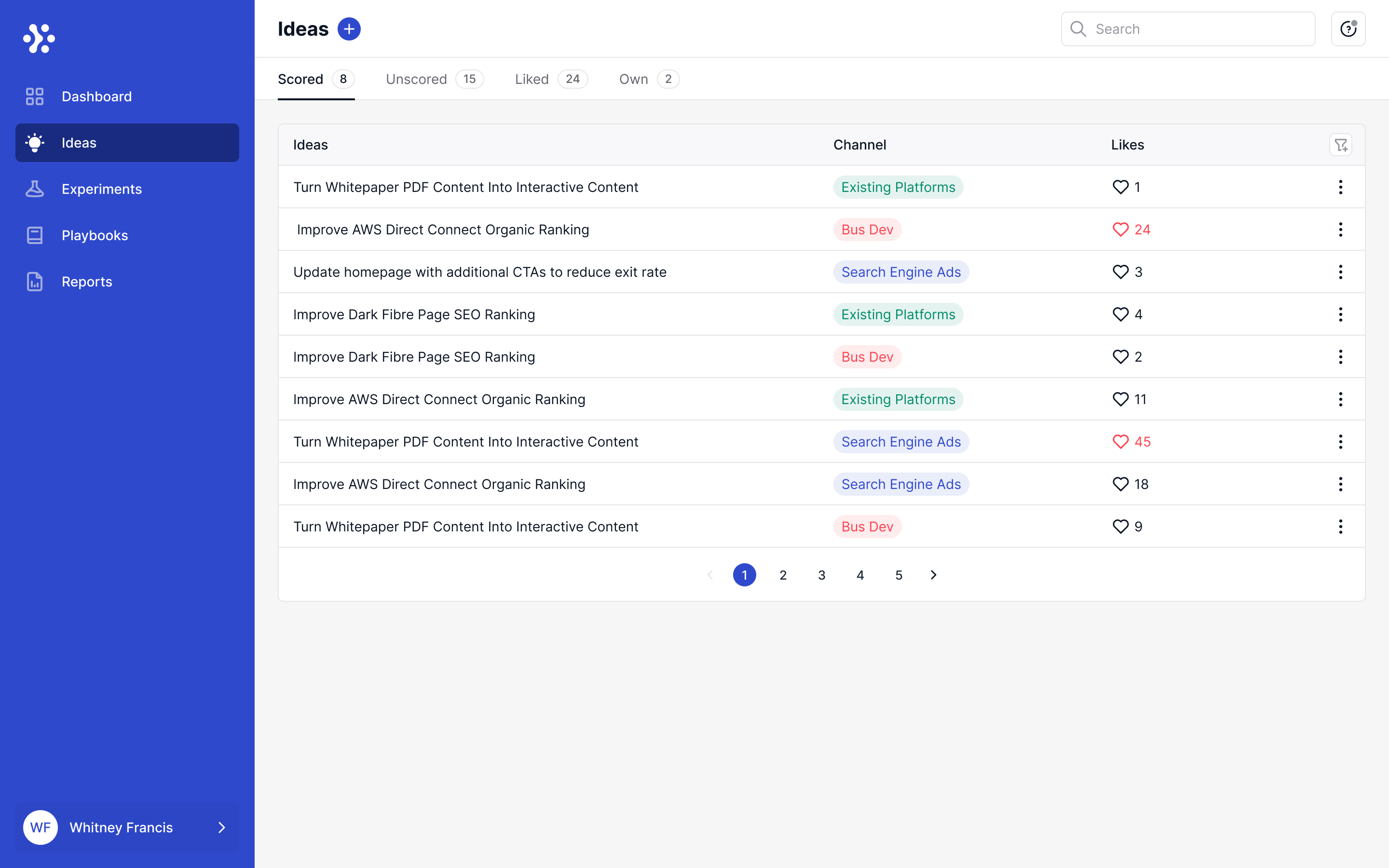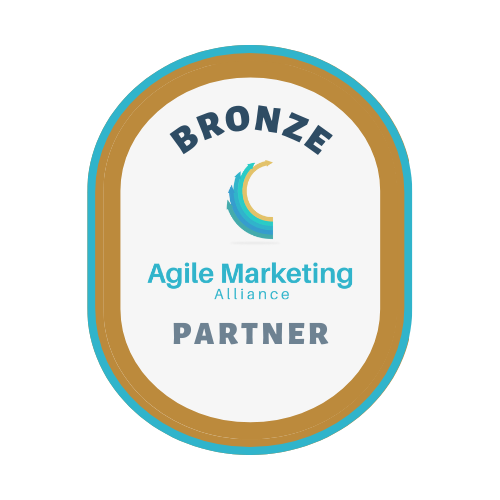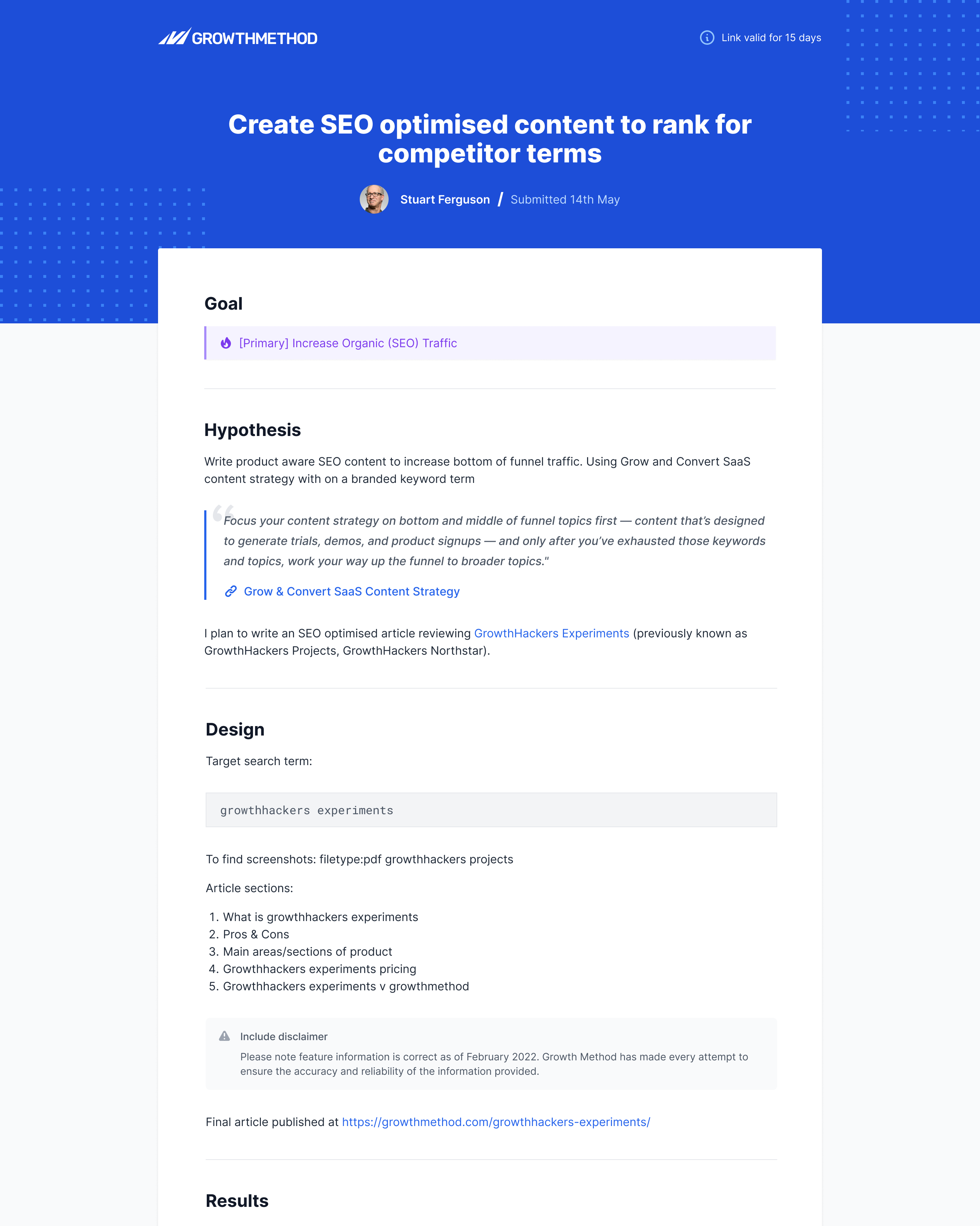Home / Agile Marketing /
What is an agile velocity chart?
Article originally published in October 2023 by Stuart Brameld. Most recent update in April 2024.
Request a demo
Project management for growth and agile marketing professionals. Map your acquisition funnel, integrate analytics and run agile experiments.
Experiment results
Recent experiments results include competitor SEO, AI-driven content, exit-intent modals and AB testing homepage headlines.
Case study
"We are on-track to deliver a 43% increase in inbound leads this year. There is no doubt the adoption of Growth Method is the primary driver behind these results."
![]()
Certified
We are vetted mentors with Growth Mentor and a partner with the Agile Marketing Alliance.
Definition of an agile velocity chart
An agile velocity chart is a visual tool used by teams to track the amount of work they can complete during a given period, often referred to as a ‘sprint’. It helps teams predict their future performance based on past results, enabling them to plan their work more effectively. The chart typically shows two bars: one for the estimated work and one for the actual work completed. This way, teams can easily see if they’re meeting their targets and where improvements might be needed.
Agile velocity charts are crucial for managing workload and maintaining productivity in a team. They provide a clear picture of a team’s capacity, helping to avoid overcommitting or underutilising resources. By comparing the estimated work with the actual work completed, teams can identify any discrepancies and adjust their planning accordingly. This continuous feedback loop allows for constant improvement and adaptation, which is at the heart of agile marketing. Furthermore, these charts can foster transparency and accountability within the team, as everyone can see what’s been achieved and what’s still to be done.
How does an agile velocity chart work?
An agile velocity chart works by tracking the amount of work a marketing team can complete in a specific time frame, typically referred to as a “sprint”. This chart is a visual representation of the team’s efficiency and productivity. It measures the total number of “story points” (a unit used to estimate the difficulty of a task) completed in each sprint. By comparing the actual points completed to the estimated points for each sprint, the chart helps marketers to predict their team’s future performance, manage workload effectively, and make necessary adjustments to meet project deadlines.
An example of an agile velocity chart
Here’s a simple representation of an Agile Velocity Chart for Growth Method:
Week 1: 20 story points completed
Week 2: 25 story points completed
Week 3: 30 story points completed
Week 4: 35 story points completed
Week 5: 40 story points completed
Week 6: 45 story points completed
Week 7: 50 story points completed
Week 8: 55 story points completed
This chart shows the number of story points (tasks or features) that the team at Growth Method has completed each week. The upward trend indicates that the team is improving its efficiency and productivity over time.
Questions to ask yourself
As a modern growth marketing or agile marketing professional, ask yourself the following questions with regard to an agile velocity chart:
- Am I effectively tracking the completion of tasks in each sprint to accurately represent progress on the agile velocity chart?
- Does the agile velocity chart reflect a consistent pace of work, or are there significant fluctuations that need to be addressed?
- Is the team’s velocity improving over time, indicating increased efficiency and productivity?
- Are there any recurring obstacles or bottlenecks that are slowing down progress, as indicated by the agile velocity chart?
- Is the agile velocity chart being used to set realistic expectations and goals for future sprints?
Other articles you might like
Here are some related articles and further reading you may find helpful.
- What is kanban marketing?
- What is scrumban marketing?
- What is lean marketing?
- What is scrum marketing?
- What is an agile sprint board?
- What is an agile story card?
- What is an agile scrum board?
- What is an agile task board?
- What is an agile kanban board?
- What is a velocity metric?
About Growth Method
Growth Method is the growth platform designed for experiment-led and data-driven marketers.

Learn more at on our homepage, connect with me on LinkedIn or Twitter, or book a call here.


